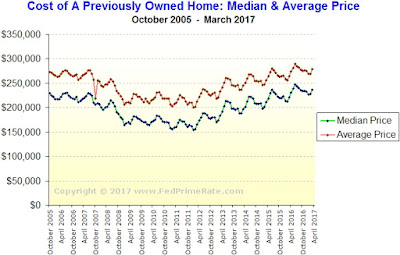Employment Cost Index for Q1, 2017
Predicted: +0.6%
Actual: +0.8%
- Reading from previous quarter: +0.5%
- Change from 12 months previous: +2.4%
The yellow-highlighter figure represents the quarter-to-quarter change for the ECI, which is the Labor Department's broadest measure of employee-compensation costs, and includes wages, salaries and benefits.
From the Labor Department website:
"...The Employment Cost Index (ECI) measures the change in the cost of labor, free from the influence of employment shifts among occupations and industries..."
==================
- The ECI report for the second quarter of 2017 will be released on July 28, 2017.
Labels: Employment_Cost_Index, hard_data, inflation, labor, labor_cost, wages
|
--> www.FedPrimeRate.com Privacy Policy <--
CLICK HERE to JUMP to the TOP of THIS PAGE > SITEMAP < |







